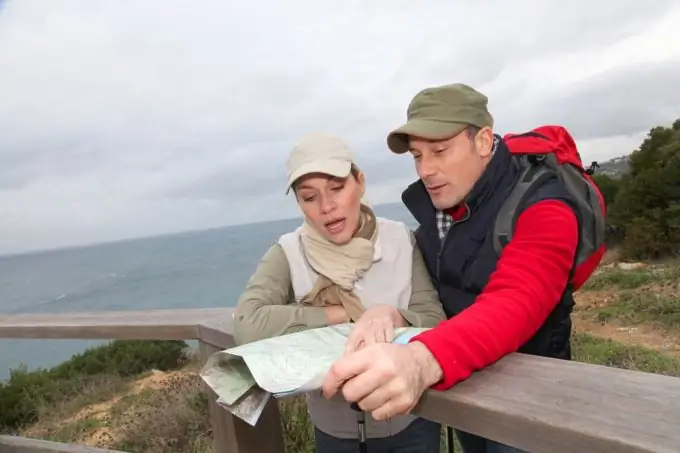- Author Caroline Forman [email protected].
- Public 2023-12-16 11:46.
- Last modified 2025-01-23 09:54.
Learning to read the map correctly means mastering the technique of visual perception and understanding the meaning of any graphic information.

As a rule, at the bottom of the map, its scale is always placed, represented in three versions - linear, numerical and verbal.
The map frame consists of two types of lines - thin inner and 2 bold outer lines. The north side is the upper part of the frame, the south side is called the lower, west-left, east-right. Above the northern part of the frame is placed the alphanumeric values of this sheet of the map - the nomenclature (code). Each map sheet from all sides and four corners has other map sheets of neighboring terrain areas, which also have neighbors.
The entire map is drawn with thin horizontal and vertical lines in squares. Vertical lines with a north-south direction, horizontal with a west-east direction. These lines create a grid of coordinates for the map. If we calculate the side of any square of the grid of coordinates at 1 to 50,000, 1 to 25,000 or 1 to 10,000 scale - on the scale of this map they will have a value equal to 1 km of terrain.
In order to determine the required grid squares on the map, numbers are written between the outer and inner frames, indicating the number of all grid lines - the coordinate. The map should be read as follows: on the western and eastern sides of the frame, the abscissa values are written from bottom to top (designated as "X"). In the north and south sides, from left to right, the ordinate values are written (denoted as "Y").
It is worth noting that the fresher the date of the map is, the younger it is, which means, rather, it shows information on a given area.
There are situations when it is necessary to find out the scale of the map, on which it is absent for some reason. In this case, there are several methods for determining the scale of such a map.
First of all, the scale can be calculated on a kilometer grid, using the knowledge that an integer value of kilometers is set between the grid lines.
The scale of the map can be recognized by the distance between adjacent objects that are plotted on the map. Thus, it is very easy to calculate the distance on the map between the kilometer posts on the road.
You can calculate the scale of the map by comparing it with another map on which the scale is indicated. The most famous method was the direct calculation of the distance on the ground between the objects depicted on the map.


